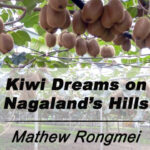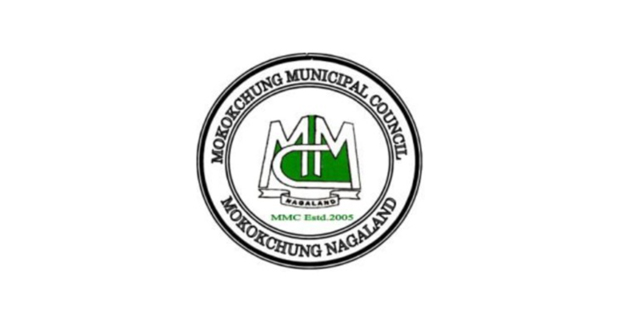The Global Naga Forum organized a virtual meeting on 19th February 2024, bringing together esteemed speakers, including Prof. Paul Pimomo, Dr Visier Sanyu, Ms Chungtin Sheu, Kenilo Kent, Vareiyo Shatsang, and Ngachonmi Chamroy. The discussions revolved around the contentious issues of the Free Movement Regime (FMR) discontinuation and the proposed Indo-Myanmar border fencing, impacting the Naga community across international borders.
Background – “Fences that Divide a People Come Down”
In response to an unprecedented crisis that threatens the autonomy and future of the Nagas, a crucial webinar titled “Fences that Divide a People Come Down.” The urgency arose from the recent announcement by the Union Home Minister of India, Amit Shah, signalling the intention to abolish the Free Movement Regime (FMR) and implement border fencing. This development raised deep concerns among the Nagas, as it went beyond mere policy changes, impacting their identity, freedom, and existence.
Recognizing the gravity of the situation, the GNF, reached out to the Naga community through an open invitation. The objective was clear – to unite Nagas across tribes, regions, and ideologies, transcending differences in the face of a common threat. The call emphasized the need for collective action, highlighting that the wounds of the decades-long struggle for autonomy were at risk of being erased without the consent of the Naga people.
The invitation served as a rallying cry for every Naga to join forces, understanding that the battle required a united front. With civil society organizations and Naga Political Groups (NPGs) already raising their voices against the unilateral decision, the webinar aimed to consolidate this momentum and strategize for the challenges ahead.
The webinar was not just a platform to discuss the implications of scrapping the FMR but a call for unprecedented leadership. It underscored the importance of open dialogue, collective planning, and a strategic approach to face the crisis head-on. The message was clear – Nagas could not afford to be passive spectators; their fate hung in the balance. The crisis demanded a united response, turning adversity into an opportunity for Naga unity, resilience, and determination.
In unity, the Nagas found strength, and the GNF believed that this strength could withstand the impending onslaught. The webinar served as a beacon for Nagas to come together, share their voices, and contribute ideas in the fight for their very existence as a people and a nation. The event aimed to channel the collective strength of the Nagas into actionable initiatives, transforming a moment of crisis into a defining chapter of unity and determination.
The UN’s Universal Declaration of Human Rights in 1948 and the Declaration on the Rights of Indigenous Peoples (UNDRIP) in 2007 became significant milestones. Prof. Paul underscored the obligations of India and Myanmar as UN member-states to adhere to these declarations. He lamented the divergence between these obligations and the harsh realities of Indo-Naga relations, marked by military invasions, ceasefires, and unresolved peace agreements.
In 2024, India’s decision to abandon the FMR and erect an international fence across Naga territories signalled a culmination of decades-long efforts to break the Naga spirit. Prof. Paul drew parallels with the Berlin Wall’s fall, emphasizing that fences built to divide a people eventually come down. He urged Nagas to remain resilient, envisioning a future where the anti-Naga Indo-Myanmar fence might be dismantled.
Dr Visier Sanyu provided a global outlook, drawing parallels between border fencing issues faced by Nagas and experiences of indigenous communities in Canada, the USA, Australia, and Sami Land. He identified resource politics as the driving force, perpetuating the exploitation of indigenous lands and fragmenting civil society.
Highlighting the complexity, Dr.Visier stressed the need for a collaborative approach. He advocated aligning with ethnic communities in Mizoram, Arunachal, Manipur, and Nagaland, forming alliances with a Northeast-wide group in formation. Dr.Visier emphasized joint teamwork to address the challenges posed by existing border fencing.
Ms. Chungtin Sheu expressed concerns about the impact of discontinuing the FMR on the Khiamniungan Community. Providing a brief history, she highlighted their presence in Northwestern Myanmar and Noklak District of Nagaland. The proposed border fencing threatened Naga families’ unity in Mon, Kiphire, Phek, and Noklak districts. She lamented the violation of the Act East Asia Policy’s spirit, which aimed to connect people but ended up dividing the Khiamniungan family. The decision to build an international fence was viewed as a policy favouring certain groups over others, raising concerns about its long-term impact on relationships among communities.
Eno Kenilo Kent, Assistant General Secretary of the Naga Students Federation (NSF), highlighted their proactive approach. The NSF submitted representations to international human rights organizations, including the United Nations. Kent expressed concern about India attempting to rewrite Naga history and affirmed the NSF’s readiness for collective action. At the same time, the Government of Nagaland should come out strongly against the scrapping of FMR.
Vareiyo Shatsang from the United Naga Council stressed the necessity of democratic protests. He proposed a biometric system to address the drug and narcotic menace, suggesting that if democratic actions were ignored, might lead to violent reactions from the people.
Ngachonmi Chamroy highlighted challenges posed by the proposed border fencing. Shifting pillars and protests made its implementation difficult for India and Myanmar. He emphasized territorial disputes, biodiversity concerns, and the need for Naga representatives in Imphal to speak up. Ngachonmi urged the Global Naga Forum to initiate a protest, emphasizing its potential as an ideal platform.
The way forward:
1. Nagas have the right to live in an undivided area that no force on earth can disrupt:
· The Naga people, like any other community, possess an inherent and undeniable right to inhabit an undivided land.
· No earthly force should dare disrupt the unity that defines the Naga identity; attempts to do so will only meet resolute resistance.
· The undivided Naga area is not just a geographical space; it is the heart and soul of a people with an indomitable spirit.
2. Scrapping Free Movement Regime and erecting border fencing is inconducive to the ongoing Indo-Naga political talks:
· The audacious move to scrap the Free Movement Regime and erect border fencing strikes at the very heart of the ongoing Indo-Naga political dialogue.
· It sends a chilling message of insincerity, jeopardizing the fragile trust painstakingly built during negotiations.
· In times where dialogue is the pathway to lasting peace, such regressive actions only undermine the progress made in achieving a mutually beneficial solution.
3. The future of India and Naga progress lies in building bridges and connectivity in an undivided Naga land:
· The future of India, particularly in the Northeast, is not fortified by walls but constructed on bridges that facilitate connectivity.
· Building walls and imposing barriers contradict the vision of progress and prosperity for both India and the Naga people.
· True development lies in embracing an undivided Naga land, creating a gateway to peace and prosperity, not only for Nagas but for the entire Northeast andbeyond into Southeast Asia. Walls impede progress; bridges unlock the gates to a shared and interconnected future.
4. Collective efforts:
The establishment of a Coordination Committee to sustain the momentum generated during the webinar and drive forward the actionable points was discussed. It was also shared for a significant event at Longwa international border. This event aims not only to shed light on the border issue globally but also to harness it as an opportunity to garner support for a united call to Naga Unity.
Emphasizing the historical significance of Nagas gathering at Kutsapo in Phek District under the Forum for Naga Reconciliation and Shisha Hoho, with diverse participants from Naga politicians, NPGs, and civil society organizations, the Longwa event is envisioned as a pivotal moment for Nagas to reassert their unity and pursue self-determination.
Media Cell
Global Naga Forum (GNF)



